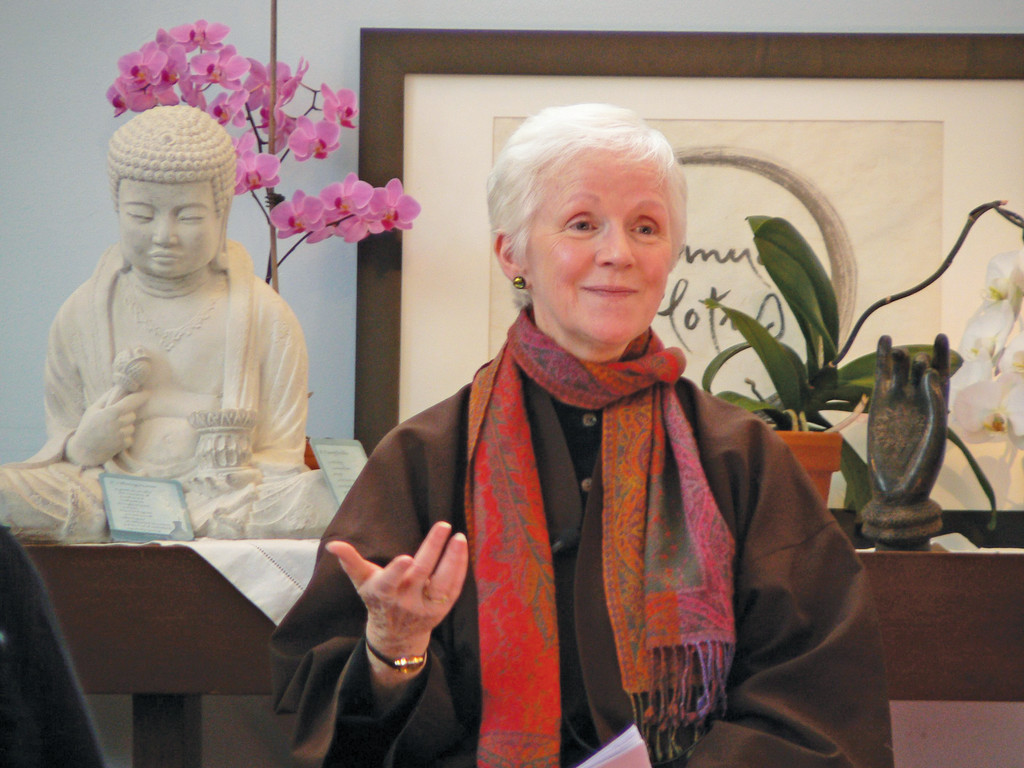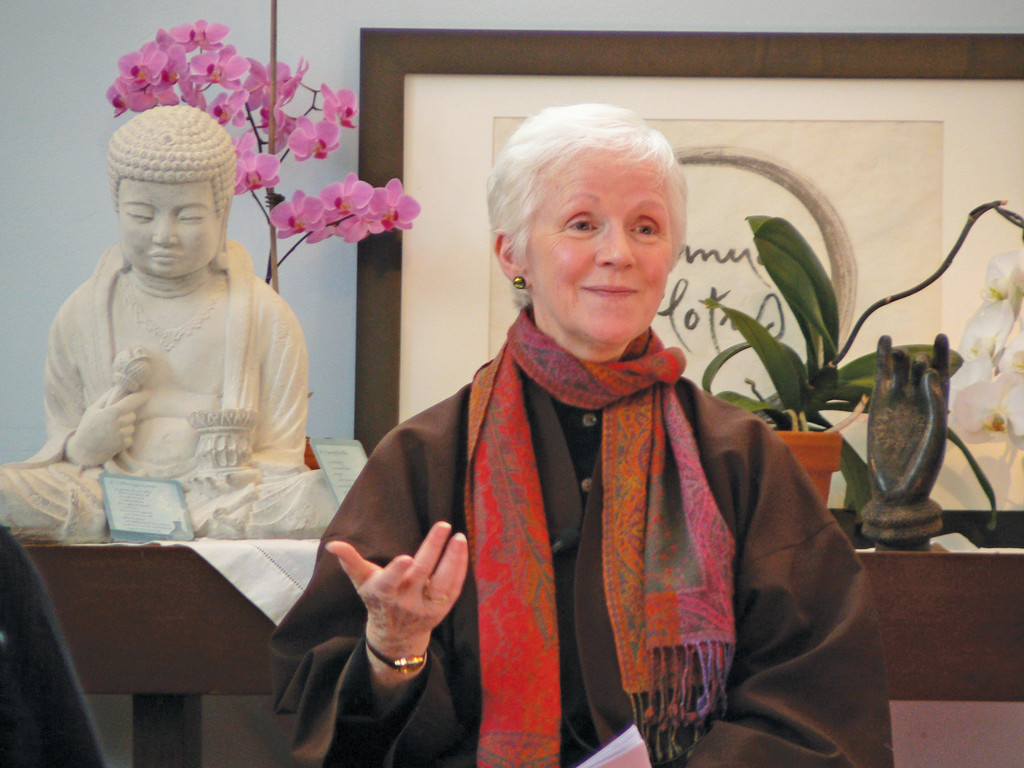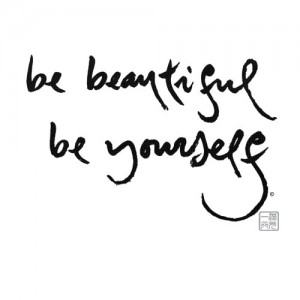The act of sitting down is an act of revolution — Thich Nhat Hanh
Sitting down is revolutionary because it means you are stopping and choosing to rest in this place, in this moment.
It’s revolutionary, because modern life is so busy. At work I’m busy getting things done, then I turn to projects at home, to shopping, to gardening, to exercise. Even after my work is done, I still keep checking email or looking for stimulation, to see if there’s something new and exciting happening on Twitter, or Instagram, or Reddit.
This busy-ness acquires a kind of momentum of its own, so that we barely remember that we have bodies.
And there’s nothing more present to us than our bodies, so it’s kind of a ridiculous situation.
There is a kind of loneliness or restlessness that we try to fill with movies, TV shows, reading books, alcohol, or food. But that emptiness never gets filled up. You can only distract yourself from it for a while, but it never goes away.
When you learn to stop, and just sit there, you have a chance to return to yourself. To your true self, and the true nature of reality.
And that’s revolutionary too, because too often we never stop to look deeply into who we really are.
For a long time I didn’t take rest very seriously. I recognized that if I wanted to do good work or exercise well, then I needed rest in between periods of effort. But it felt to me like the rest was just something that I had to do in between the meaningful parts, the important stuff.
And I often felt, as I think many people do, that the rest was something I had to earn. So I would work hard and only then would I felt like I deserved to rest at the end of the day, or on the weekend.
Rest seemed like nothing to me. Just sitting there was usually quite boring, unless I was making the effort to meditate. I needed something to do.
But some things have happened in the past year or two that have helped me to understand rest better.
Sitting as protest
One of the things that has happened is getting acquainted with active, living traditions of protest and resistance, many of which have involved sitting down in public: Sitting down as an act of revolution.
For example, sit-ins in the 1950s and 1960s were a powerful form of resistance. Simply by sitting in a particular place, simply by showing up and being present, people were able to put enormous wheels of change into motion.
This was not always easy. Far from it. Sometimes others would yell at these people who were sitting down at a lunch counter, or pour food on them or drag them out forcibly, arresting them and charging them with breaking the law. In fact, many of the people who took part in these sit-in protests were arrested and convicted — and it was only in the 21st century that their charges were dismissed and their records cleared.
I think this is another reason why Thich That Hanh says that sitting is an act of revolution. Sometimes, just sitting at a lunch counter is a protest, because you’re not supposed to be there. Sometimes, just sitting requires you to do something different than what everyone around you is doing — and that can be revolutionary.
Sitting down as a form of active protest has continued for decades, kept alive by generations of activists. For example, Extinction Rebellion has carried on this tradition by sitting in public spaces. Although these protests can be disruptive, for instance by stopping traffic, XR is also committed to nonviolence, peace, and to doing these actions in a very mindful way.
A Plum Village monastic, Brother Phap Man, sat down with Extinction Rebellion protestors in New York in 2019, and got arrested. He’s written about how it was one of the most important and meaningful days of his life.
Days of mindfulness and lazy days
People who aspire to be part of the core community of the Order of Interbeing, to be ordained as OI members and follow the 14 Mindfulness Trainings, are asked to observe 60 days of mindfulness a year.
This is already a daunting requirement. If every day of mindfulness is like the formal days of mindfulness hosted by various sanghas, this is a lot of work! Organizing a day of mindfulness takes a lot of thoughtful planning, communication, and patience. You need to find someone to facilitate meditation, someone to offer deep relaxation, someone to facilitate dharma sharing. Maybe there is a dharma talk. Perhaps someone else will offer some kind of mindful movement. You’ll want some time for singing and for mindfully eating together.
Even attending one of these days of mindfulness can be a lot of work, because you need to clear your schedule and bring 100% of your focus to it, as much as possible.
And you’re supposed to do 60 of those a year?
At some point I learned that Thay also recommends taking a “Lazy Day” every week. This was the point at which I got a little freaked out, and started to think that the OI path might only be suitable for monastics and retired people.
60 Days of Mindfulness plus a Lazy Day every one of the 52 weeks of the year means 112 days, or about one-third of my year, would be devoted to mindfulness and Plum Village practices.
I am sure I’d be a very spiritual person if I could do all that, but with a job, a house, a wife, two kids, two dogs, and a cat to look after, it did not seem like a realistic lifestyle for me.
Also, I didn’t want to do any days of mindfulness or “sitting down” actions where I could get arrested, because I can’t really afford to get arrested right now!
Learning to do less
Despite these fears, somehow I actually managed to get started with the OI aspiration process. And as I started to talk with my teacher, Lennis Lyon, one of the first things she told me to think about was asking myself not “what more can I do?” but “what less can I do?”
I took this so seriously that I wrote a little calligraphy saying “What Less Can I Do?” and I put it on the cover of my notebook. This is the notebook that I use to write down all the things related to my aspiration, all my notes on the things I need to do in order to be a good Buddhist. I had to put a little calligraphy on the cover to remind myself that I don’t necessarily need to do so much.
Still, I wanted to create a reading list, a curriculum for my training as an aspirant. Lennis told me that she used to have a curriculum, but she doesn’t really use it. But after a few months, she reluctantly gave me a reading assignment.
It was just 4 pages from The Heart of the Buddha’s Teaching, specifically, the passage on aimlessness — apranihita.
So even with this assignment, Lennis was trying to teach me to do less!
Aimlessness is about not trying too hard. Not aiming for anything in particular but just letting each moment be, and doing what needs doing right now.
In that passage was a line that really struck me:
“There is no need to put anything in front of us and run after it. We already have everything we are looking for, everything we want to become. We are already a Buddha so why not just take the hand of another Buddha and practice walking meditation?”
Uposatha Days and Sabbath Days
Another thing that helped me understand rest better is learning about the work of Tricia Hersey. She is a performance artist and activist, and the founder of “The Nap Ministry,” which is “an organization that examines the liberating power of naps.” You can follow the Nap Ministry on Instagram, Facebook, or Twitter — she’s very inspiring.
Tricia Hersey brings black liberation theology together with a critique of capitalism and patriarchy — and she is also an enthusiastic proponent of taking naps.
Hersey also talks about Sabbath days — sacred days of rest.
In the Jewish tradition, Shabbat, the Sabbath, happens once a week. It honors the seventh day of creation, the day on which God rested. When I looked into it, I learned that the Sabbath is very deep, and similar in spirit to Uposatha Days and Days of Mindfulness. It’s a chance to connect with the divine, with true reality, to be extra mindful of what is most important and most real in life. It is a sacred time.
(On this topic, I also recommend this short post on Shabbat by Rabbi Rachel Barenblat, as well as the book The Sabbath by Abraham Heschel.)
Then I remembered that in the Buddhist tradition, there is also a kind of Sabbath, called Uposatha days.
These are days when you work less, you study the dharma more, you might follow a few extra precepts, maybe you stay overnight at a temple. They happen at the new Moon, the full Moon, and the two quarter Moons in between — in other words, about once a week.
In both of these traditions, rest is very important. The Nap Ministry talks about creating “sacred and safe spaces for the community to rest together.” Safe spaces are important! But it is also important to create sacred and safe times for the community to rest. This is the brilliance of Uposatha days and Sabbath days.
In this view — which the Nap Ministry woke me up to — rest is not something you earn. It is not something you only get to do after a hard day, or a hard week, of work.
Hersey, and Heschel, taught me that rest is a divine right. It is when we are resting that we are most in touch with our true, divine nature. It is only our conditioning that makes us think we need to work all the time, to hustle, to grind, to be busy busy busy. (And who does that benefit?)
Lazy days of mindfulness
So with apranihita and Shabbat in mind I started thinking about how I could get away with doing less than 112 days of very spiritual practice a year.
The first thing I did was to combine Days of Mindfulness and Lazy Days. So now, once a week, I observe a Lazy Day of Mindfulness where I try, as much as possible, to do just one thing at a time, to take it easy and to rest. I try to be as mindful as I can be, while going about the activities of my normal weekend life. It’s my Day of Rest.
There are actually thousands of years of traditional precedent, both East and West, for doing this!
It was a real breakthrough for me to realize that rest is actually a part of Buddhist practice — maybe the most important part. For instance, I used to take a very “busy” approach to meditation. It didn’t count as meditation unless I was working really hard at it! I had to be counting breaths, very strict about my attention, sitting very rigidly, and so on.
But no: Meditation is also about rest. Just sitting. Just being present in a particular place, right now.
This is not just an individual practice. Sanghas can also organize Lazy Days of Mindfulness, days when the sangha gets together but the organizers don’t feel like they have to fill the whole day with scheduled activities. Maybe we just get together, meditate for awhile, do some mindful walking, and then see what other activities might manifest based on who’s there and what they want to offer. Calligraphy? Reading? Or maybe we all drink a little tea and then take naps.
As Thay has written: “Resting is a very important practice; we have to learn the art of resting. Resting is the first part of Buddhist meditation. You should allow your body and your mind to rest. Our mind as well as our body needs to rest.”
Four meditation postures
Rest and meditation can both happen in a variety of ways — even standing or walking. In fact, the Buddha recognized four postures for meditation: sitting, standing, walking, and lying down.
The Plum Village tradition has sitting meditation, of course, and we are very good at walking meditation. We also have lying-down meditation, only we call it deep relaxation. Half the time we may fall asleep during deep relaxation, but that is okay. Rest is a divine right!
Standing meditation is not discussed a lot in our tradition, as far as I know. But I did get to practice standing meditation during Sit-Walk-Listen, which was a series of mindful demonstrations in support of Black Lives Matter that took place in San Francisco, Los Angeles, and New York in the summer and fall of 2020. These events were organized by an inspiring group of Wake Up practitioners who put a lot of careful attention into making the events inclusive, safe, and restful spaces; sometimes there were over 100 people all meditating, moving, and talking to support Black Lives Matter (and later, also, to support Stop Asian Hate).
At many of these events, I was one of the “caretakers” who stood watch while everyone else practiced sitting meditation in a public place, such as the broad plaza in front of City Hall in San Francisco. Usually there were four of us caretakers, standing outside the meditation circle, keeping an eye out for anyone who might come by: passersby, media, police, and “shouty people.”
When I wasn’t talking with passersby, which was most of the time, this practice was about just standing there. Just breathing and observing. And I found that, while this was also part of the demonstration, it was very restful as well.
My conclusion is simple: I enthusiastically recommend taking a lazy day and a day of mindfulness every week, and make them the same day. You can call it a day of rest, as I do.
It can be helpful to put a little ceremony around these days in order to give yourself extra permission to rest. For example, in observant Jewish families, it’s traditional to joyfully welcome the Sabbath with candles and prayer and song. I’m not Jewish, but I’ve experimented with lighting candles to welcome the weekend on Friday night, which is nice. My family is not too excited about prayers and songs, so I’m leaving those aside for now, but the candles we all like.
I find it is helpful to put my phone away, to turn it off or to not carry it in my pocket, and spend all day off the internet as much as possible.
I try to eat each meal mindfully, maybe reciting the Five Contemplations first. If I can take a mindful walk around the neighborhood, that’s good too.
Of course I have things to do on Saturdays: Shopping, taking care of the garden, driving my kids to one place or another. So strict Shomer Shabbos rules like “no handling money” or “no driving cars” don’t work for me, although they might be very supportive for others. (Note: that’s a link to a video clip from The Big Lebowski, which might not make sense if you don’t know the movie.)
The basic idea, though, is whatever I have to do, I try to do it as mindfully as possible.
I think there are many ways to put together a day of rest, and it’s worth some experimentation. This is just how I do it, and it’s been working very well for me for the past couple of years, but some other restful practices may work better for you.
And of course, a day of rest should include a nap! Dogs can be a great inspiration for this.
A word of warning, though. Sitting down and resting is an act of revolution. If you follow this practice, you may find that you start to see things differently. You might find you are increasingly out of sync with the always-on, constantly busy world we live in. You might start to wonder why everyone in a capitalist, patriarchal society feels they need to hustle so hard. You might start to imagine a world where we all have the freedom to do less. You might start to think about liberation.
One last recommendation: If you can get a hammock, or borrow a friend’s, lying in a hammock is a really good thing to do on a day of rest!





